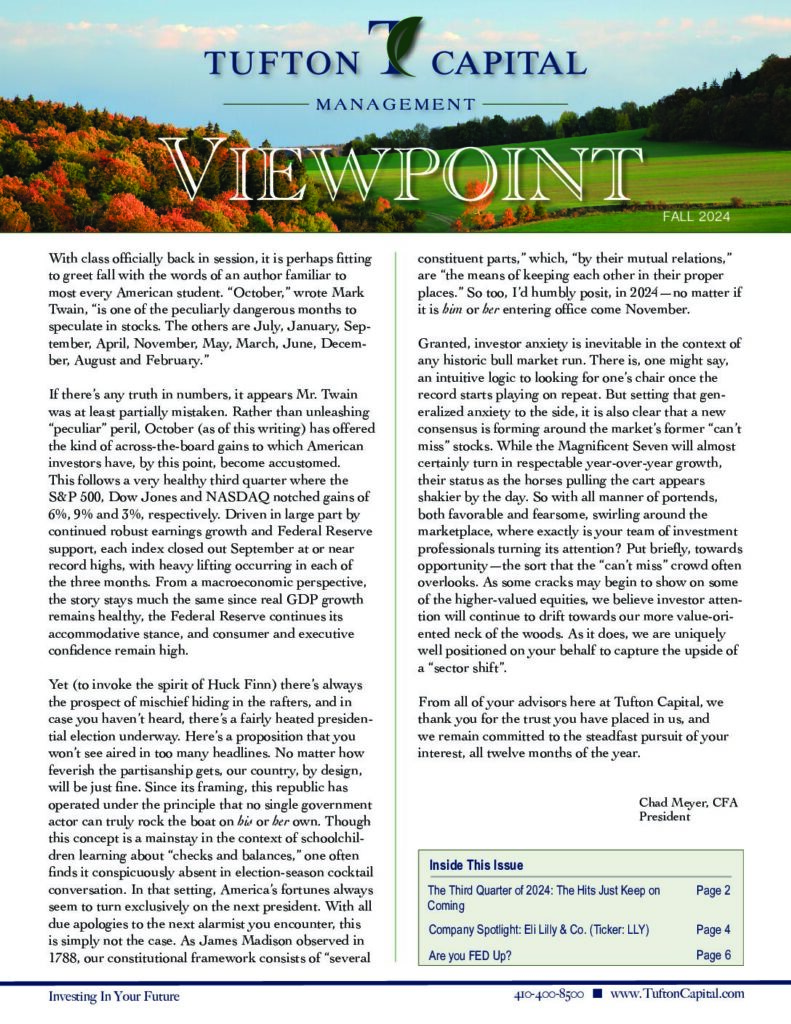The Weekly View (7/4/16 – 7/8/16)
What’s On Our Minds:
The Labor Department’s report for June demonstrated strong growth—287,000 jobs were added in the month—for the United States, particularly when compared to May’s dismal addition of only 11,000 jobs. The average for these two months, 149,000 in payroll growth, is closer to the 100,000 in sustained growth Chairwoman Janet Yellen finds necessary in order to keep the unemployment statistics at its natural rate of 5%.
Supporting this sentiment, the unemployment rate rose to 4.9% in June, up from the previous month’s rate of 4.7%. So, you might ask, “what exactly does this mean?” Well, the closer that statistic approaches 5%–eliminating so-called “slack” in the labor market–the greater the amount of upward pressure on wage growth; the farther unemployment drops below 5%, the higher inflation moves above our annual target of 2%
While hourly wages rose a very modest 0.1% in June, year-over-year wage growth was up 2.6%, up from the targeted 2% and indicative of a growing, albeit slowly, economy. Thus, while June’s employment statistics are very reassuring, we need to remember that our economy targets 2% inflation (growth), and cannot tolerate continued job growth in the 200,000s.
As it relates to interest rates, the optimism implied in June’s statistics might enable the Federal Reserve to modestly raise rates in the near future—maybe even as soon as September. However, given the post-Brexit macro climate, it is not out of question for the Fed to continue surveying the future landscape of both the domestic and global markets in order to ensure its actions benefit the economy.
The Labor Department’s report injected investors with optimism, helping drive the markets to near record-highs by Friday’s close. But as with all economic and market data, it is important that investors evaluate their decisions with long-term implications in mind, not getting caught up “in the moment”, so to speak. And while the investment and research teams here at Tufton were surely happy with Friday’s market performance, we remain disciplined in our approach to grounded, long-run investment decisions.
Last Week’s Highlights:
Domestic markets were closed on Monday for Independence Day. In the abbreviated week of trading, the stock market accelerated its rally. Since Brexit news shocked the market, we have experienced a 4% gain over the past 2 weeks. Believe it or not, we have now regained all of the losses experienced due to the Brexit uncertainty and we are flirting with all-time highs. At the beginning of the week we saw investors continuing a move towards safety but some good economic numbers were released later in the week which helped to propel stocks higher. Friday was “Jobs Day” and the market opened up after the Department of Labor reported that June payrolls increased by 287,000 which was more than expected. The Fed’s dovish tone on keeping rates low appeared to be a signal of “let the good times roll” for domestic equity markets. All of this action in the equity markets over the past few weeks is a reminder of how important it is to take a long term approach to equity investing.
Looking Ahead:
Markets will look to build on last week’s gains. We will get a look at more economic data and we will be monitoring the beginning of earnings season. Alcoa will kick off second quarter earnings season when it releases its results after the closing bell on Monday. Earnings calls from a few big financial institutions will be interesting this week as analysts will likely be asking for their opinions on post-Brexit fallout. On Thursday, our analysts will be listening to earnings calls from JPMorgan Chase and on Friday, Citigroup and Wells Fargo. Thursday we will see the Bank of England’s first monetary decision since the nation’s Brexit vote. Some believe they may cut Britain’s interest rate from 0.5% to keep their economy going during a time when uncertainty rules their headlines. Back home on Friday, the Department of Commerce will also release June retail sales numbers. The market is expecting an increase of 0.1%. Also on Friday, the Department of Labor will release consumer price index numbers from June. The market is expecting an improvement of .03%.





